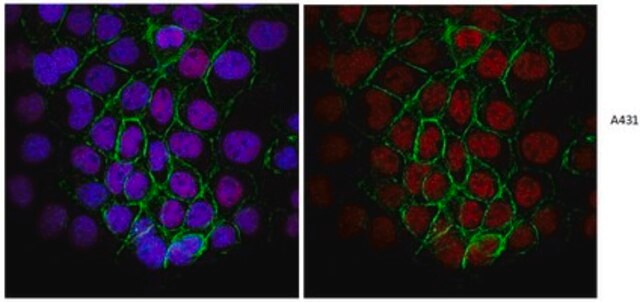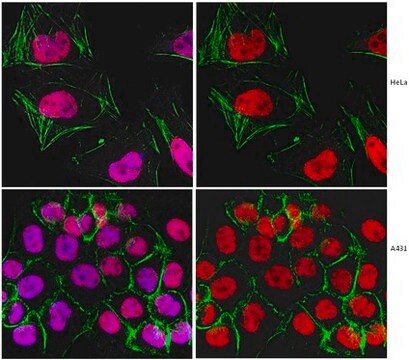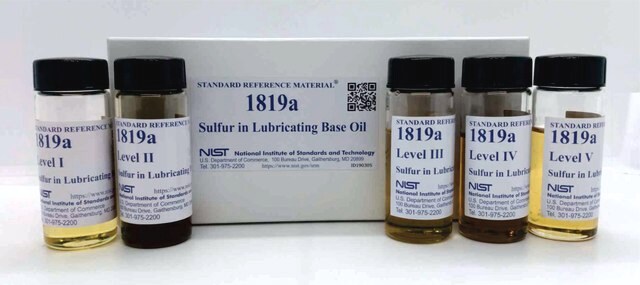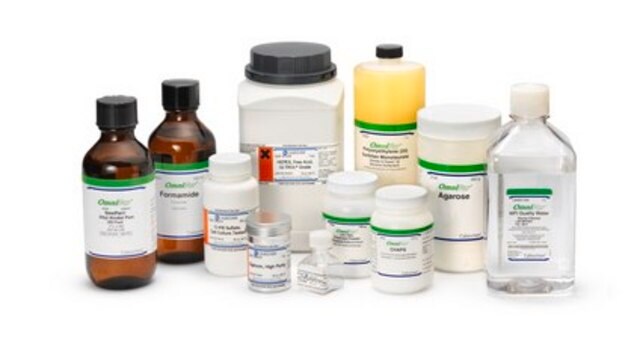04-1481
Przeciwciało anty-RPA2 p34, klon RPA20 1-46
from mouse, clone RPA20, clone 1-46
Synonim(y):
RF-A protein 2, RP-A p32, RP-A p34, Replication factor A protein 2, replication protein A2 (32kD), replication protein A2, 32kDa, Replication protein A 32kDa subunit, RF-A, replication factor-A protein 2, p32, p34, RPA2, REPA2, RPA32.
About This Item
Polecane produkty
pochodzenie biologiczne
mouse
Poziom jakości
forma przeciwciała
affinity isolated antibody
rodzaj przeciwciała
primary antibodies
klon
1-46, monoclonal
RPA20, monoclonal
reaktywność gatunkowa
human, mouse
opakowanie
antibody small pack of 25 μg
metody
western blot: suitable
izotyp
IgG1κ
numer dostępu NCBI
numer dostępu UniProt
Warunki transportu
ambient
docelowa modyfikacja potranslacyjna
unmodified
informacje o genach
human ... RPA2(6118)
Powiązane kategorie
Opis ogólny
Specyficzność
Immunogen
Zastosowanie
Epigenetyka i funkcje jądrowe
Cykl komórkowy, replikacja i naprawa DNA
Biologia chromatyny
Jakość
Western Blot Analysis: 0.5 µg/mL of this antibody detected RPA2 on 10 µg of HeLa cell lysate.
Opis wartości docelowych
Postać fizyczna
Przechowywanie i stabilność
Komentarz do analizy
Lizat komórek HeLa
Inne uwagi
Oświadczenie o zrzeczeniu się odpowiedzialności
Nie możesz znaleźć właściwego produktu?
Wypróbuj nasz Narzędzie selektora produktów.
Certyfikaty analizy (CoA)
Poszukaj Certyfikaty analizy (CoA), wpisując numer partii/serii produktów. Numery serii i partii można znaleźć na etykiecie produktu po słowach „seria” lub „partia”.
Masz już ten produkt?
Dokumenty związane z niedawno zakupionymi produktami zostały zamieszczone w Bibliotece dokumentów.
Nasz zespół naukowców ma doświadczenie we wszystkich obszarach badań, w tym w naukach przyrodniczych, materiałoznawstwie, syntezie chemicznej, chromatografii, analityce i wielu innych dziedzinach.
Skontaktuj się z zespołem ds. pomocy technicznej








